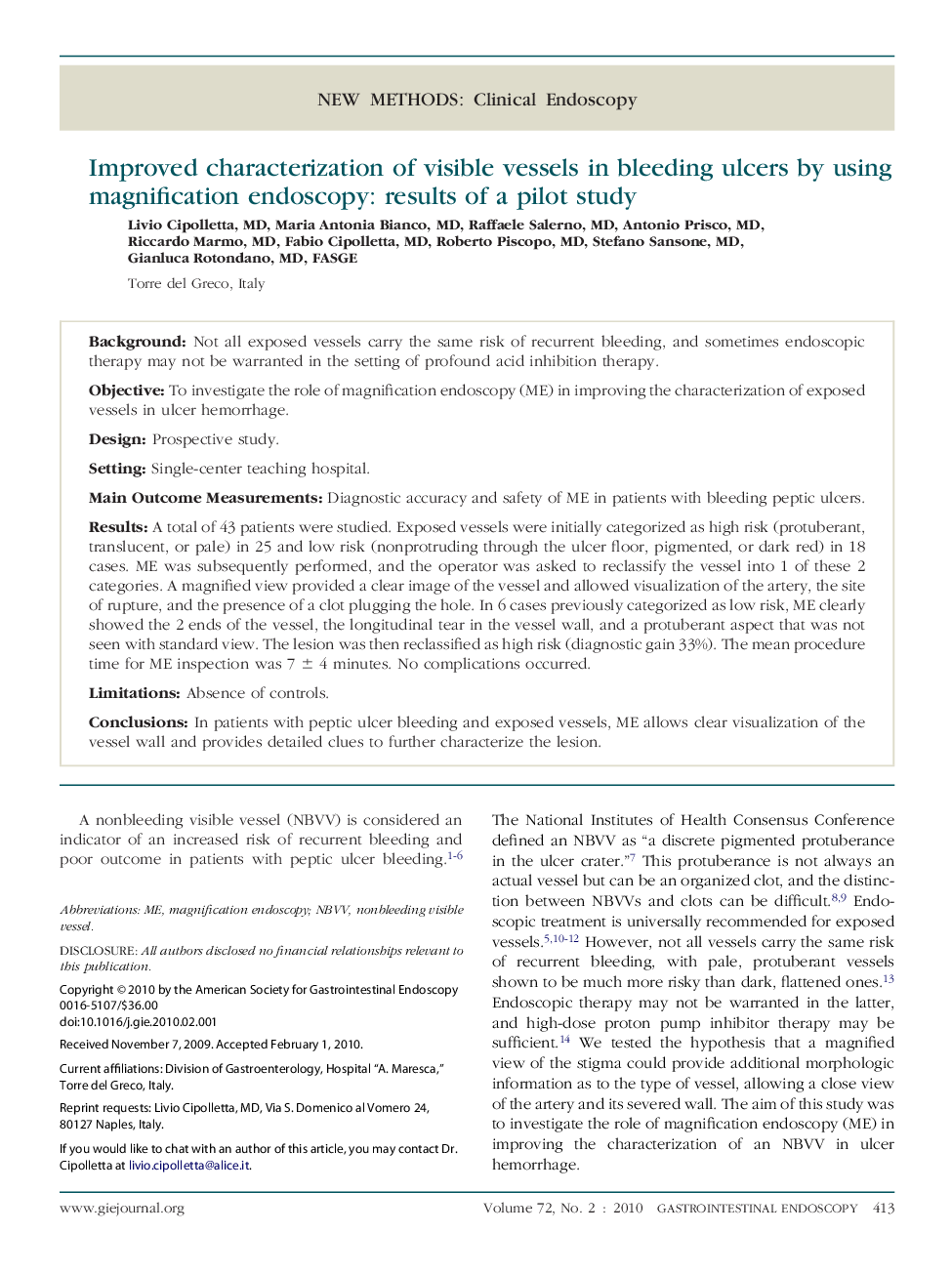| Article ID | Journal | Published Year | Pages | File Type |
|---|---|---|---|---|
| 6098663 | Gastrointestinal Endoscopy | 2010 | 6 Pages |
BackgroundNot all exposed vessels carry the same risk of recurrent bleeding, and sometimes endoscopic therapy may not be warranted in the setting of profound acid inhibition therapy.ObjectiveTo investigate the role of magnification endoscopy (ME) in improving the characterization of exposed vessels in ulcer hemorrhage.DesignProspective study.SettingSingle-center teaching hospital.Main Outcome MeasurementsDiagnostic accuracy and safety of ME in patients with bleeding peptic ulcers.ResultsA total of 43 patients were studied. Exposed vessels were initially categorized as high risk (protuberant, translucent, or pale) in 25 and low risk (nonprotruding through the ulcer floor, pigmented, or dark red) in 18 cases. ME was subsequently performed, and the operator was asked to reclassify the vessel into 1 of these 2 categories. A magnified view provided a clear image of the vessel and allowed visualization of the artery, the site of rupture, and the presence of a clot plugging the hole. In 6 cases previously categorized as low risk, ME clearly showed the 2 ends of the vessel, the longitudinal tear in the vessel wall, and a protuberant aspect that was not seen with standard view. The lesion was then reclassified as high risk (diagnostic gain 33%). The mean procedure time for ME inspection was 7 ± 4 minutes. No complications occurred.LimitationsAbsence of controls.ConclusionsIn patients with peptic ulcer bleeding and exposed vessels, ME allows clear visualization of the vessel wall and provides detailed clues to further characterize the lesion.
